
|
|
#1 |
|
Участник
|
dynamicsax-fico: Cost accounting (5)
Источник: https://dynamicsax-fico.com/2017/08/...-accounting-5/
============== Within this post, we will focus on another two cost accounting topics that are related to the first pillar of a classical cost accounting module before we move on to the second pillar and take a deeper look at the cost center accounting features. Part 1: Corrections Sometimes it is necessary to make corrections to the data recorded (transferred) to the cost accounting module. As an example, let’s assume that $150 taxi costs that are posted in combination with the admin cost center no. 400 do actually belong to the sales cost center no. 500.  In the ‚old’ cost accounting module, cost accountants could simply correct such errors by making use of cost accounting journals that did not have an influence on the financial accounting system. In other words, adjustments that were made in the cost accounting module had no effect on the other finance modules. With the new cost accounting module, this option is no longer available and necessary changes to transferred accounting data must either be made by importing adjustment transactions through data entities directly into the new cost accounting module or – better – by recording adjustments in the originating finance modules. Part 2: Combine data from different companies The previous (old) cost accounting module was limited to a single company and could not analyze data originating from different companies. This has been changed in the new cost accounting module, which allows analyzing data from multiple companies that are either setup in D365 or that use other (external) ERP systems. Within the following, we will have a look at a simplified example where financial data from two companies (DEMF & USMF) will be analyzed together. To understand and follow the example, please note that the two companies use different Chart of Accounts and different currencies. The financial data used for the following illustrations can be identified in the next figure. 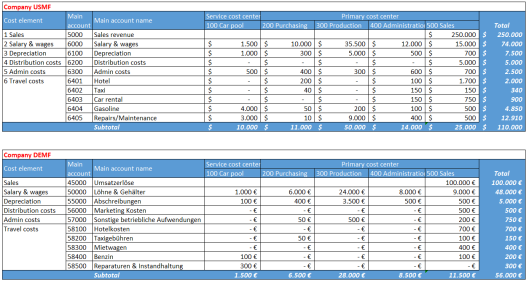 To get the financial data analyzed together, three cost element dimensions need to be specified: 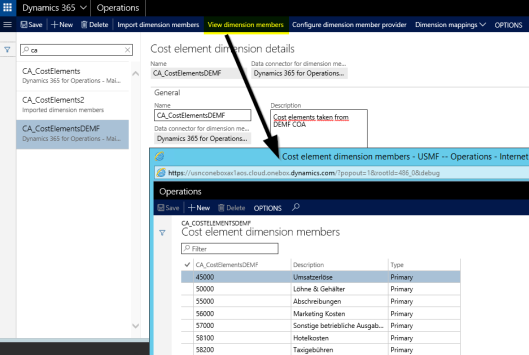
 Once the different cost elements are mapped, a cost element dimension hierarchy needs to be setup because it is required for the configuration of the cost accounting ledger. 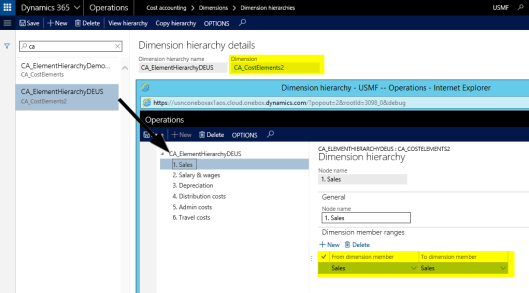 The cost accounting ledger refers then to this cost element dimension hierarchy and the cost control units (cost centers). As the setup of the cost control units is identical to what has been shown in the previous posts, reference is made to those previous explanations to conserve space.  The next required setup step consists of configuring the data provider for the cost accounting ledger, which is necessary for getting the cost accounting data transferred to the cost accounting ledger. Because two companies are now connected to the cost accounting ledger, two data provider need to be specified. This is illustrated in the next screenprint.   Please note that the data providers need to be configured in a way that they refer to the cost element dimensions of the specific entity. Please note that the data providers need to be configured in a way that they refer to the cost element dimensions of the specific entity.Once the configuration is made, the data can be imported into the cost accounting ledger as shown before. The next step is then the setup of the cost controlling workspace, which links the control unit, the cost element and the cost object hierarchies. 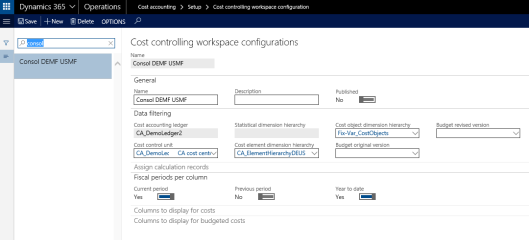 After the cost controlling workspace is setup, the combined business data can be analyzed, as exemplified below. 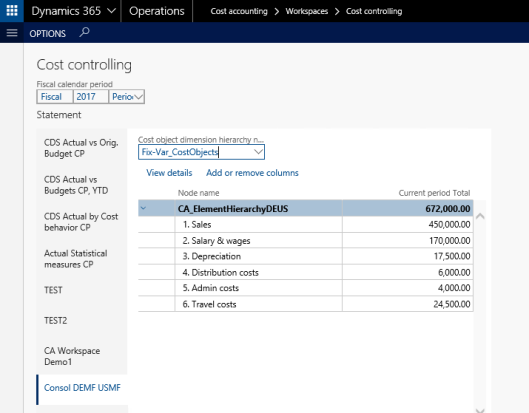  Please note that an exchange rate of 1 EUR = 2 USD has been used for the currency conversion of the EUR data in order to consolidate them into the combined USD data that are illustrated in the cost controlling workspace. Please note that an exchange rate of 1 EUR = 2 USD has been used for the currency conversion of the EUR data in order to consolidate them into the combined USD data that are illustrated in the cost controlling workspace.This post ends the series on the first pillar of a classical cost accounting system – the classification of a company’s costs. The previous posts showed that also the new cost accounting module allows classifying costs according to their behavior (fixed vs. variable), their nature (primary vs. secondary) and by functions (admin, travel, etc.). Compared to the previous cost accounting module, users have more options in regards to the data that can be analyzed in the new cost accounting module (cross-company & integration of posting layers). Those enhanced options come, however at the price that additional / more complex setups are required. The following posts will investigate how cost center accounting functionalities are supported in the new cost accounting module. Till then. Filed under: Cost accounting Tagged: Combine Data from different companies, Controlling, Corrections, Cost accounting module, Management Accounting Источник: https://dynamicsax-fico.com/2017/08/...-accounting-5/
__________________
Расскажите о новых и интересных блогах по Microsoft Dynamics, напишите личное сообщение администратору. |
|
|